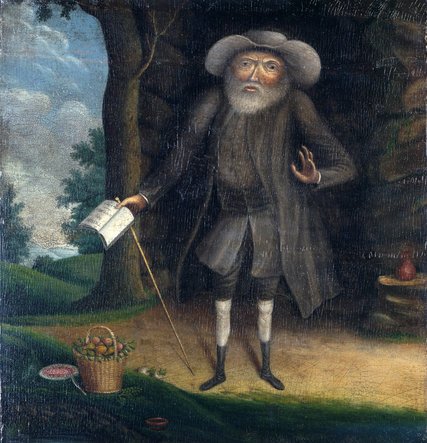It was September 1738, and Benjamin Lay had walked 20 miles, subsisting on “acorns and peaches,” to reach the Quakers’ Philadelphia Yearly Meeting. Beneath his overcoat he wore a military uniform and a sword — both anathema to Quaker teachings. He also carried a hollowed-out book with a secret compartment, into which he had tucked a tied-off animal bladder filled with bright red pokeberry juice.
When it was Lay’s turn to speak, he rose to address the Quakers, many of whom had grown rich and bought African slaves. He was a dwarf, barely four feet tall, but from his small body came a thunderous voice. God, he intoned, respects all people equally, be they rich or poor, man or woman, white or black.
Throwing his overcoat aside, he spoke his prophecy: “Thus shall God shed the blood of those persons who enslave their fellow creatures.” He raised the book above his head and plunged the sword through it. As the “blood” gushed down his arm, several members of the congregation swooned. He then splattered it on the heads and bodies of the slave keepers. His message was clear: Anyone who failed to heed his call must expect death — of body and soul.
Lay did not resist when his fellow Quakers threw him out of the building. He knew he would be disowned by his beloved community for his performance, but he had made his point. As long as Quakers owned slaves, he would use his body and his words to disrupt their hypocritical routines…
You’ll Never Be as Radical as This 18th-Century Quaker Dwarf
This article is a repost promoting content originally published elsewhere. See more things Dan's reposted.
